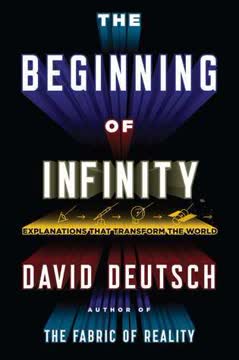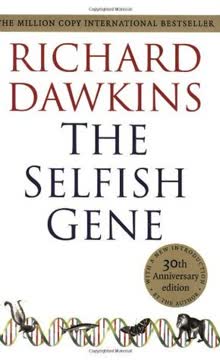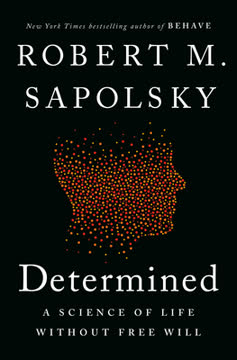मुख्य निष्कर्ष
1. मानव सोच सहयोग और साझा उद्देश्य से विकसित हुई
मानव सोच व्यक्तिगत नवाचार है जो सामाजिक-सांस्कृतिक जाल में बुनी गई है।
विकासवादी दृष्टिकोण: साझा उद्देश्य की धारणा यह बताती है कि मानव सोच सामाजिक समन्वय की आवश्यकता के जवाब में विकसित हुई। यह प्रक्रिया दो मुख्य चरणों में हुई:
- संयुक्त उद्देश्य: प्रारंभिक मानवों ने विशिष्ट साथियों के साथ संयुक्त लक्ष्य और साझा ध्यान विकसित किया।
- सामूहिक उद्देश्य: आधुनिक मानवों ने समूह-व्यापी रीति-रिवाज, मानदंड और संस्थान बनाए।
इन अनुकूलनों ने संज्ञानात्मक प्रतिनिधित्व, तर्क और आत्म-निरीक्षण के नए रूपों को जन्म दिया, जिससे बंदर जैसे व्यक्तिगत उद्देश्य को विशिष्ट मानव सोच में बदला गया। इस प्रकार मानव संज्ञान का विकास मानव सामाजिकता और सहयोग के विकास से अविभाज्य है।
2. महान बंदरों में उन्नत व्यक्तिगत संज्ञान और सामाजिक समझ होती है
महान बंदरों की संज्ञान और सोच इस सामाजिक, लेकिन बहुत सहयोगी न होने वाले, जीवनशैली के अनुकूल है।
व्यक्तिगत उद्देश्य: महान बंदर तीन मुख्य क्षेत्रों में उन्नत संज्ञानात्मक क्षमताएं दिखाते हैं:
- संज्ञानात्मक प्रतिनिधित्व: वे अपने पर्यावरण को समझने के लिए चित्रात्मक और योजनाबद्ध मॉडल का उपयोग करते हैं।
- कारणात्मक और उद्देश्यपूर्ण तर्क: बंदर भौतिक और सामाजिक घटनाओं के बारे में तार्किक निष्कर्ष निकाल सकते हैं।
- व्यवहार आत्म-निरीक्षण: वे अपने निर्णय लेने की प्रक्रियाओं का मूल्यांकन करते हैं।
हालांकि, महान बंदरों की संज्ञान मुख्यतः प्रतिस्पर्धा के लिए अनुकूलित है, न कि सहयोग के लिए। वे दूसरों को उद्देश्यपूर्ण एजेंट के रूप में समझते हैं, लेकिन मानवों की तरह साझा उद्देश्य या सहयोगी संचार में संलग्न नहीं होते।
3. प्रारंभिक मानवों ने सहयोगी गतिविधियों के लिए संयुक्त उद्देश्य विकसित किया
प्रारंभिक मानवों की संयुक्त उद्देश्य और द्वितीय-व्यक्तिगत सोच सामाजिकता और सोच के बीच एक क्रांतिकारी बदलाव थी।
सहयोगी समस्या समाधान: संयुक्त उद्देश्य तब उभरा जब प्रारंभिक मानवों को जीवित रहने के लिए नए पारिस्थितिक चुनौतियों का सामना करना पड़ा, जिनमें सहयोग आवश्यक था। इससे हुआ:
- व्यक्तिगत भूमिकाओं के साथ संयुक्त लक्ष्यों का निर्माण
- व्यक्तिगत दृष्टिकोणों के साथ संयुक्त ध्यान का विकास
- एक द्वि-स्तरीय संरचना का सृजन जिसमें साझा करना और व्यक्तिगतता दोनों शामिल थे
इन अनुकूलनों ने प्रारंभिक मानवों को अपने कार्यों और ध्यान का बेहतर समन्वय करने में सक्षम बनाया, जिससे सहयोगी समस्या समाधान और सामाजिक संवाद के नए रूप विकसित हुए। यह "द्वितीय-व्यक्तिगत" जुड़ाव मानव सामाजिकता और संज्ञान के जटिल रूपों की नींव बना।
4. सहयोगी संचार ने कार्यों और दृष्टिकोणों के समन्वय को संभव बनाया
मानव, लेकिन अन्य प्राइमेट नहीं, अपने संचार में सहयोग करते हैं ताकि दूसरे के दृष्टिकोण को समझना और यदि चाहें तो उसे प्रभावित करना आसान हो सके।
संकेतात्मक संचार: प्रारंभिक मानवों ने मुख्यतः इशारों और पैंटोमाइम के माध्यम से सहयोगी संचार के नए रूप विकसित किए। इसके लिए आवश्यक था:
- दूसरों के दृष्टिकोण को लेना
- सामाजिक पुनरावृत्त तर्क करना
- सामाजिक आत्म-निरीक्षण में संलग्न होना
सहयोगी संचार ने प्रारंभिक मानवों को अपने कार्यों का समन्वय करने और जानकारी साझा करने में सक्षम बनाया। इससे प्रतीकात्मक प्रतिनिधित्व की क्षमता और दूसरों की मानसिक अवस्थाओं के बारे में तर्क करने की योग्यता भी विकसित हुई।
5. आधुनिक मानवों ने सांस्कृतिक प्रथाओं के माध्यम से सामूहिक उद्देश्य बनाया
आधुनिक मानवों ने शून्य से शुरुआत नहीं की, बल्कि प्रारंभिक मानव सहयोग से शुरुआत की।
समूह-चेतना: आधुनिक मानव संज्ञान के संक्रमण में शामिल था:
- समूह पहचान और सांस्कृतिक साझा आधार का विकास
- पारंपरिक सांस्कृतिक प्रथाओं और मानदंडों का सृजन
- सामूहिक रूप से स्वीकृत भूमिकाओं और पदों के साथ सामाजिक संस्थाओं का उदय
इस सामूहिक उद्देश्य ने मानवों को अजनबियों के साथ समन्वय करने और बड़े पैमाने पर समाज बनाने में सक्षम बनाया। इससे "वस्तुनिष्ठ" दृष्टिकोण और मानक सोच का विकास भी हुआ, क्योंकि व्यक्ति समूह के मानकों और अपेक्षाओं को आंतरिक रूप से ग्रहण करते हैं।
6. पारंपरिक भाषा ने तर्क और चिंतन के नए रूपों को संभव बनाया
पारंपरिक भाषाई संचार ने विकासशील बच्चों को वैकल्पिक अवधारणाओं के लिए पूर्व-निर्मित प्रतिनिधित्व प्रणाली प्रदान की, और सभी सांस्कृतिक साझा आधार में उपलब्ध विकल्पों को जानते थे।
भाषाई नवाचार: पारंपरिक भाषा के विकास ने कई महत्वपूर्ण संज्ञानात्मक प्रगति लाई:
- अमूर्त भाषाई संरचनाओं और प्रस्तावात्मक सामग्री का सृजन
- जटिल विचारों, मानसिक अवस्थाओं और तार्किक क्रियाओं को व्यक्त करने की क्षमता
- औपचारिक और व्यवहारिक तर्कों का विकास
- चिंतनशील सोच और आंतरिक संवाद की सुविधा
भाषा ने मानवों को अधिक जटिल विचारों को संप्रेषित करने और नए तर्क के रूपों में संलग्न होने की अनुमति दी। साथ ही, यह एक साझा प्रतिनिधित्व प्रणाली प्रदान करती है जो संचार और व्यक्तिगत सोच दोनों के लिए उपयोगी है।
7. मानव सोच सामाजिक और सांस्कृतिक अंतःक्रियाओं से मूल रूप से प्रभावित होती है
मानव जैविक रूप से अपनी अनूठी संज्ञानात्मक प्रतिनिधित्व, तर्क और आत्म-निरीक्षण की मूल क्षमताएं अपने सहयोगी और संचारात्मक सामाजिक अंतःक्रियाओं से प्राप्त करते हैं।
सामाजिक संज्ञान: मानव सोच का विकास गहराई से सामाजिक और सांस्कृतिक अनुभवों से जुड़ा है:
- संज्ञानात्मक कौशल सहयोगी गतिविधियों और संचार के माध्यम से उभरते हैं
- सांस्कृतिक प्रथाएं और कलाकृतियां व्यक्तिगत सीखने और विकास का आधार बनती हैं
- सामाजिक अंतःक्रियाएं व्यक्तियों के विश्व प्रतिनिधित्व और तर्क को आकार देती हैं
यह दृष्टिकोण बताता है कि मानव संज्ञान केवल व्यक्तिगत मस्तिष्क विकास का परिणाम नहीं है, बल्कि जीवन भर सामाजिक और सांस्कृतिक अंतःक्रियाओं से मूल रूप से प्रभावित होता है।
8. वस्तुनिष्ठ और मानक सोच समूह-चेतना से उत्पन्न हुई
मानव तर्क, भले ही वह आंतरिक रूप से स्वयं के साथ किया जाए, एक प्रकार की सामूहिक मान्यता से भरा होता है जिसमें व्यक्ति अपने कार्यों और सोच को समूह के मानदंडों और मानकों के आधार पर नियंत्रित करता है।
मानक आत्म-शासन: वस्तुनिष्ठ और मानक सोच के उदय में शामिल था:
- एजेंट-तटस्थ, "वस्तुनिष्ठ" दृष्टिकोणों का विकास
- सामाजिक मानदंडों और समूह मानकों का आंतरिककरण
- तर्कसंगतता और सत्य के लिए साझा मानदंडों का सृजन
इस प्रक्रिया ने मानवों को अमूर्त अवधारणाओं पर तर्क करने और जटिल बहस और निर्णय लेने के रूपों में संलग्न होने की अनुमति दी। इससे विज्ञान, कानून और दर्शन जैसे सांस्कृतिक संस्थानों का विकास भी हुआ।
9. मानव संज्ञान के विकास में विकासात्मक प्रक्रिया महत्वपूर्ण भूमिका निभाती है
सामाजिक वातावरण के अभाव में, ये क्षमताएं उपयोग न होने के कारण फीकी पड़ जाएंगी, जैसे पूरी तरह अंधेरे में जन्मे और पले-बढ़े व्यक्ति की दृष्टि क्षमता।
विकासात्मक दृष्टिकोण: मानव संज्ञान का विकासात्मक विकास शामिल है:
- प्रारंभिक शैशवावस्था से देखभाल करने वालों और साथियों के साथ अंतःक्रिया
- सांस्कृतिक कलाकृतियों, प्रथाओं और भाषा के संपर्क में आना
- सामाजिक और सांस्कृतिक मानदंडों का धीरे-धीरे आंतरिककरण
यह विकासात्मक प्रक्रिया विशिष्ट मानव संज्ञानात्मक क्षमताओं के उदय के लिए आवश्यक है। उपयुक्त सामाजिक और सांस्कृतिक इनपुट के बिना, व्यक्ति मानव संज्ञान की पूरी श्रृंखला विकसित नहीं कर पाएंगे, जो मानव संज्ञान में सामाजिक अंतःक्रिया की अनिवार्य भूमिका को दर्शाता है।
अंतिम अपडेट:
FAQ
1. What is A Natural History of Human Thinking by Michael Tomasello about?
- Exploration of Human Cognition: The book investigates what makes human thinking unique, focusing on the evolutionary and developmental roots of our cognitive abilities.
- Social Cooperation as Key: Tomasello argues that human thinking evolved primarily through social cooperation, distinguishing us from other primates.
- Two-Step Evolutionary Process: The narrative centers on the emergence of joint intentionality and collective intentionality as the two major evolutionary steps that transformed primate cognition into complex, culturally embedded human reasoning.
- Integration of Multiple Perspectives: The book combines evolutionary theory, developmental psychology, and comparative studies with great apes to explain the origins of human cognition.
2. Why should I read A Natural History of Human Thinking by Michael Tomasello?
- Comprehensive Evolutionary Account: Tomasello provides a detailed, evidence-based explanation of how human thinking evolved, filling a gap in our understanding of human uniqueness.
- Interdisciplinary Insights: The book bridges psychology, anthropology, linguistics, philosophy, and evolutionary biology, offering a rich, multifaceted view of cognition.
- Clarifies Complex Concepts: Key ideas like joint intentionality, collective intentionality, and normative self-governance are explained clearly, making the book accessible to a broad audience.
- Challenges Common Assumptions: Tomasello’s arguments challenge simplistic views of intelligence and highlight the centrality of social cooperation in cognitive evolution.
3. What are the key takeaways from A Natural History of Human Thinking by Michael Tomasello?
- Cooperation as Cognitive Foundation: Human cognition is deeply rooted in cooperative sociality, with shared intentionality shaping the evolution of thinking, communication, and culture.
- Two-Step Evolutionary Model: The transition from individual intentionality to joint, and then collective intentionality, explains the emergence of uniquely human cognitive abilities.
- Culture and Norms as Integral: Culture and social norms are not just external influences but are integral to the structure of human thinking, enabling objectivity, reflection, and norm-governed reasoning.
- Language as a Capstone: Language and conventional communication are seen as products of earlier adaptations for shared intentionality, not the starting point of human cognition.
4. How does Michael Tomasello define and explain "shared intentionality" in A Natural History of Human Thinking?
- Core Hypothesis: Shared intentionality is the capacity to form joint goals, share attention, and coordinate actions and intentions with others, creating a "we" perspective.
- Evolutionary Steps: Tomasello distinguishes between joint intentionality (dyadic collaboration) and collective intentionality (group-mindedness), both of which are unique to humans.
- Cognitive Transformation: These adaptations enable perspectival thinking, recursive inference about others’ mental states, and normative self-monitoring.
- Foundation for Culture: Shared intentionality underpins the development of language, culture, and social norms.
5. What are "joint intentionality" and "collective intentionality" in Tomasello’s theory, and how do they differ?
- Joint Intentionality: This is the ability to form joint goals and coordinate roles with specific partners, involving second-personal engagement and recursive perspective-taking.
- Collective Intentionality: This involves group-mindedness, where social norms, conventions, and institutions are collectively created and enforced, enabling coordination with large groups and strangers.
- Key Differences: Joint intentionality is dyadic and second-personal ("I-you"), while collective intentionality is agent-neutral and applies to "anyone" in the group.
- Cognitive and Social Impact: Joint intentionality fosters collaboration and symbolic representation; collective intentionality leads to objective, normative, and institutional thinking.
6. How does Tomasello contrast human thinking with great ape cognition in A Natural History of Human Thinking?
- Great Ape Cognition: Apes possess individual intentionality, flexible problem-solving, and some social cognition, but their sociality is mainly competitive.
- Human Joint Intentionality: Humans evolved the ability to form joint goals, share attention, and engage in cooperative communication, which apes lack.
- Collective Intentionality and Culture: Only humans developed group-mindedness, social norms, and institutions, enabling large-scale cooperation and objective reasoning.
- Qualitative Shift: These evolutionary steps represent a qualitative transformation in cognition, not just a quantitative increase in intelligence.
7. What are the three key components of thinking according to Tomasello’s framework in A Natural History of Human Thinking?
- Cognitive Representation: The ability to create abstract, off-line models of situations, including representing multiple perspectives simultaneously.
- Simulation and Inference: The capacity to simulate potential actions and outcomes, making causal, intentional, and logical inferences, especially about others’ mental states.
- Self-Monitoring: The ability to evaluate and regulate one’s own thinking and behavior, anticipating others’ evaluations and introducing normative self-governance.
8. How does A Natural History of Human Thinking explain the emergence of conventional communication and language?
- From Gestures to Conventions: Early humans used natural, iconic gestures for coordination, which evolved into conventionalized, normatively enforced linguistic signs.
- Cultural Common Ground: Communication became explicit and obligatory within groups, relying on shared cultural knowledge and expectations.
- Arbitrariness and Abstraction: Over time, gestures became stylized and arbitrary, allowing for abstract and flexible conceptualization.
- Linguistic Constructions: Complex linguistic patterns emerged, enabling creative conceptual combination and the framing of experiences in conventional ways.
9. What role do social norms and institutions play in human thinking according to Michael Tomasello?
- Social Norms as Standards: Norms are agent-neutral standards that regulate behavior based on collective evaluations, enforced by group members.
- Normative Self-Monitoring: Humans internalize norms, leading to self-regulation and concern for public reputation, even when personal preferences differ.
- Institutions as Constitutive Norms: Institutions create new social realities by establishing roles and powers through collective agreement and symbolic marking.
- Objective Social Facts: Institutional facts are objective yet observer-relative, existing because of collective intentionality and normative enforcement.
10. How does Tomasello describe the development of reflective thinking and reasoning in humans in A Natural History of Human Thinking?
- Discourse and Explicitation: Language allows individuals to make implicit thoughts explicit, enabling self-reflection and perspective-taking.
- Reason-Giving Practices: Shared decision-making requires providing reasons and justifications, fostering cooperative argumentation and logical consistency.
- Internalization of Social Reasoning: Social processes of giving and evaluating reasons become internalized as individual reasoning, creating a web of beliefs governed by community standards.
- Normative Governance: Reflective reasoning is shaped by social norms and collective intentionality, ensuring rational discourse and self-monitoring.
11. What is agent-neutral thinking in Tomasello’s theory, and how does it relate to objectivity?
- Agent-Neutral Perspective: Modern humans adopt a generic viewpoint that applies norms and conventions impartially to any group member, not just specific individuals.
- Objectivity as Social Construct: Objectivity arises from group-mindedness, generalizing perspectives into a sense of external reality through collective agreement.
- Role of Language and Institutions: Language and institutions reinforce objectivity by making norms and facts explicit and public.
- Cognitive Consequences: Agent-neutral thinking enables conventional, propositional representations and transforms cognition from individual to collective frameworks.
12. What is the role of ontogeny (development) in the emergence of uniquely human thinking according to A Natural History of Human Thinking?
- Developmental Sequence: Children first develop joint intentionality skills (joint attention, joint goals) around their first year, followed by collective intentionality (understanding norms, conventions) around age three.
- Necessity of Social Environment: Rich social and cultural interaction is essential for developing these cognitive adaptations; isolation prevents their emergence.
- Biological and Cultural Interaction: Shared intentionality is a biological adaptation that requires cultural nourishment and extended human ontogeny for full development.
- Mirroring Evolutionary History: The ontogenetic sequence in children reflects the evolutionary steps outlined in Tomasello’s theory.
समीक्षाएं
मानव सोच का प्राकृतिक इतिहास टॉमसेलो के उस सिद्धांत को प्रस्तुत करता है, जिसमें वे बताते हैं कि मानव संज्ञान सहयोगात्मक सामाजिक संवादों के माध्यम से विकसित हुआ है, जो व्यक्तिगत सोच से लेकर संयुक्त और फिर सामूहिक इरादों तक बढ़ा है। पाठकों ने इस पुस्तक के विचारों को आकर्षक और प्रयोगात्मक प्रमाणों से समर्थित पाया, खासकर बंदरों और मानव बच्चों के बीच तुलना के संदर्भ में। कई लोगों ने टॉमसेलो के बहुविषयक दृष्टिकोण की प्रशंसा की, जिसमें उन्होंने मनोविज्ञान, मानवशास्त्र और दर्शनशास्त्र को एक साथ जोड़ा है। हालांकि, कुछ ने इसकी गहन शैक्षणिक लेखन शैली और पुनरावृत्ति की आलोचना भी की। कुल मिलाकर, समीक्षकों ने इसे मानव संज्ञान की उत्पत्ति पर एक महत्वपूर्ण और विचारोत्तेजक कृति माना, भले ही यह पढ़ने में चुनौतीपूर्ण हो।















